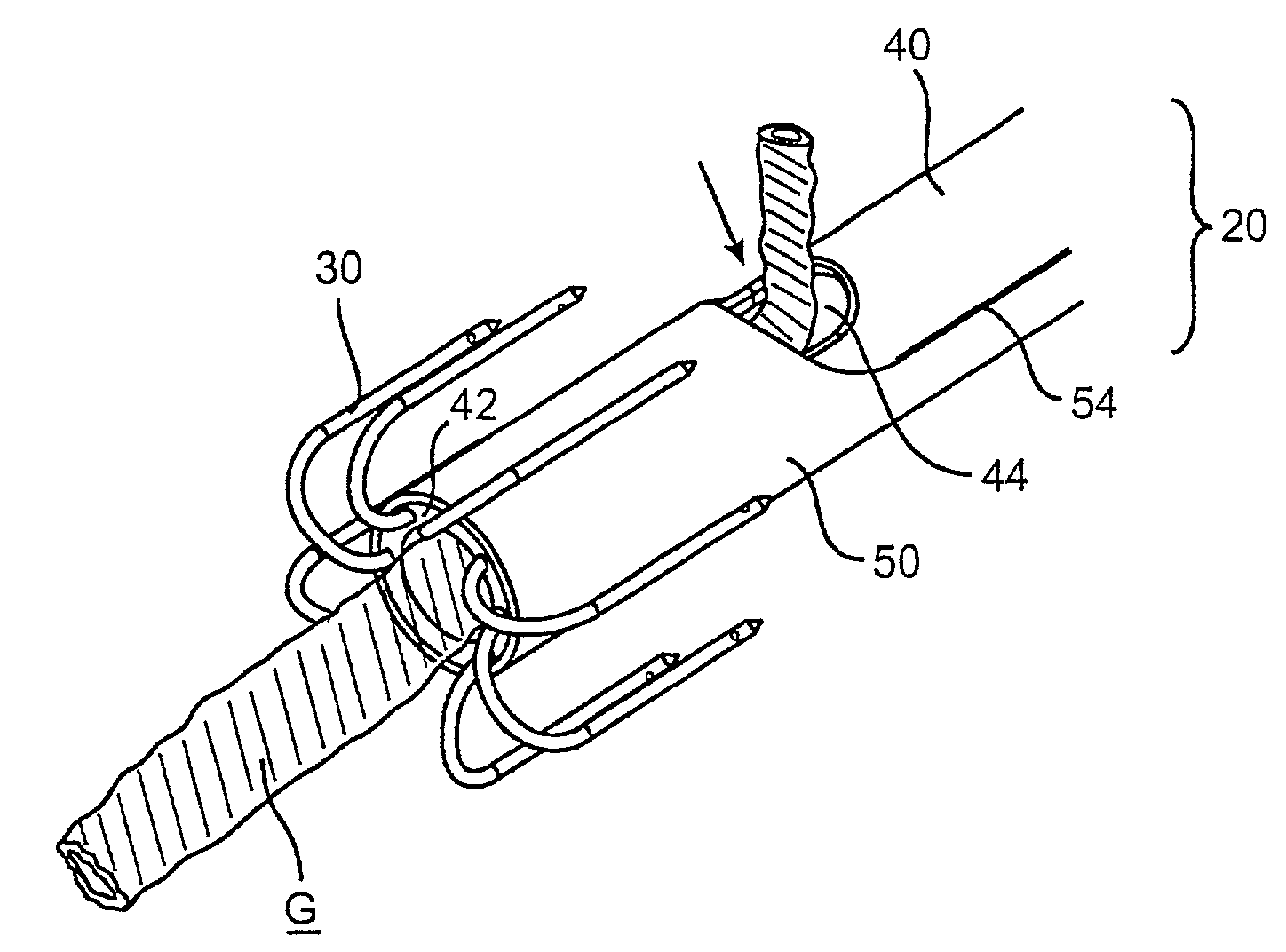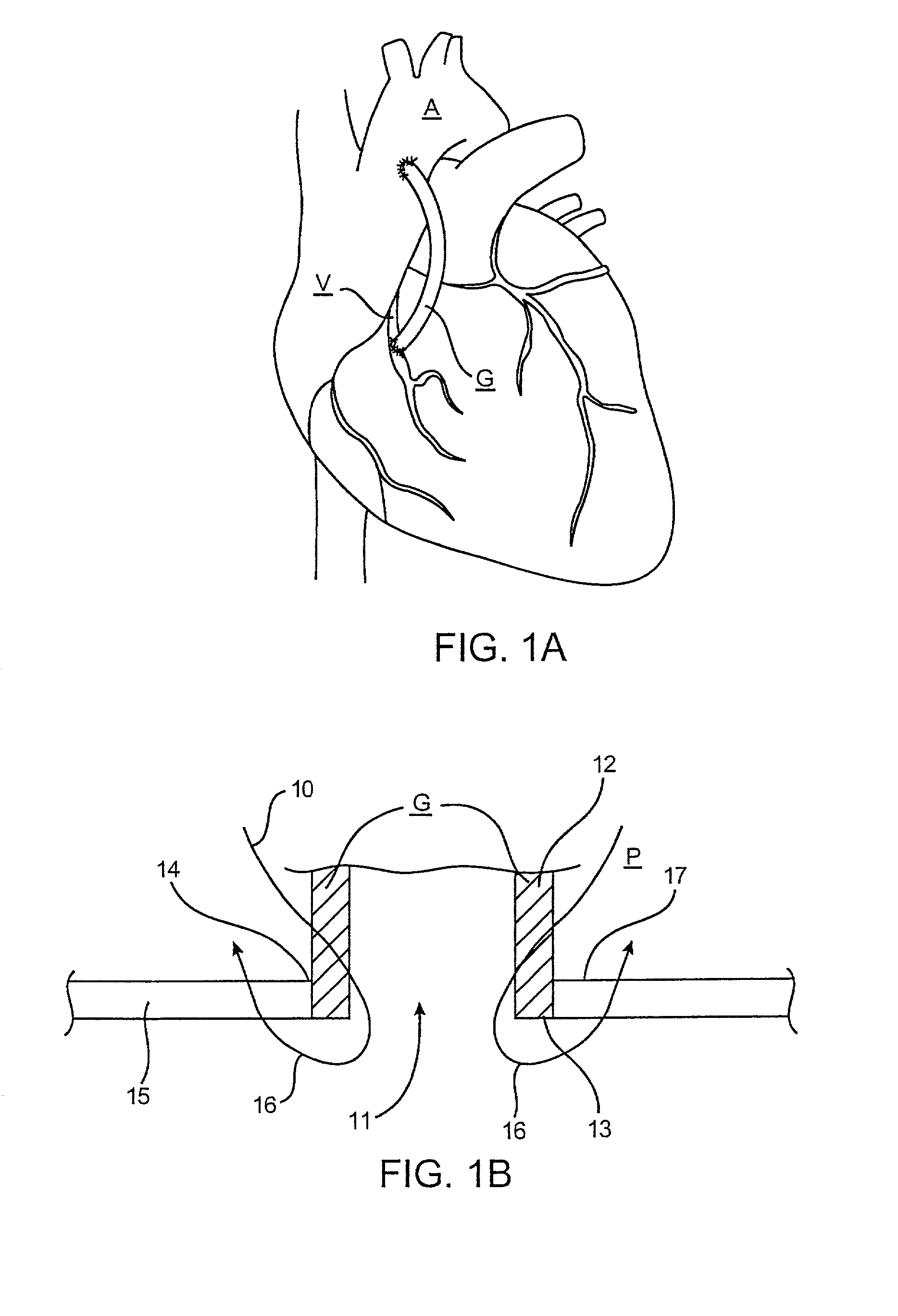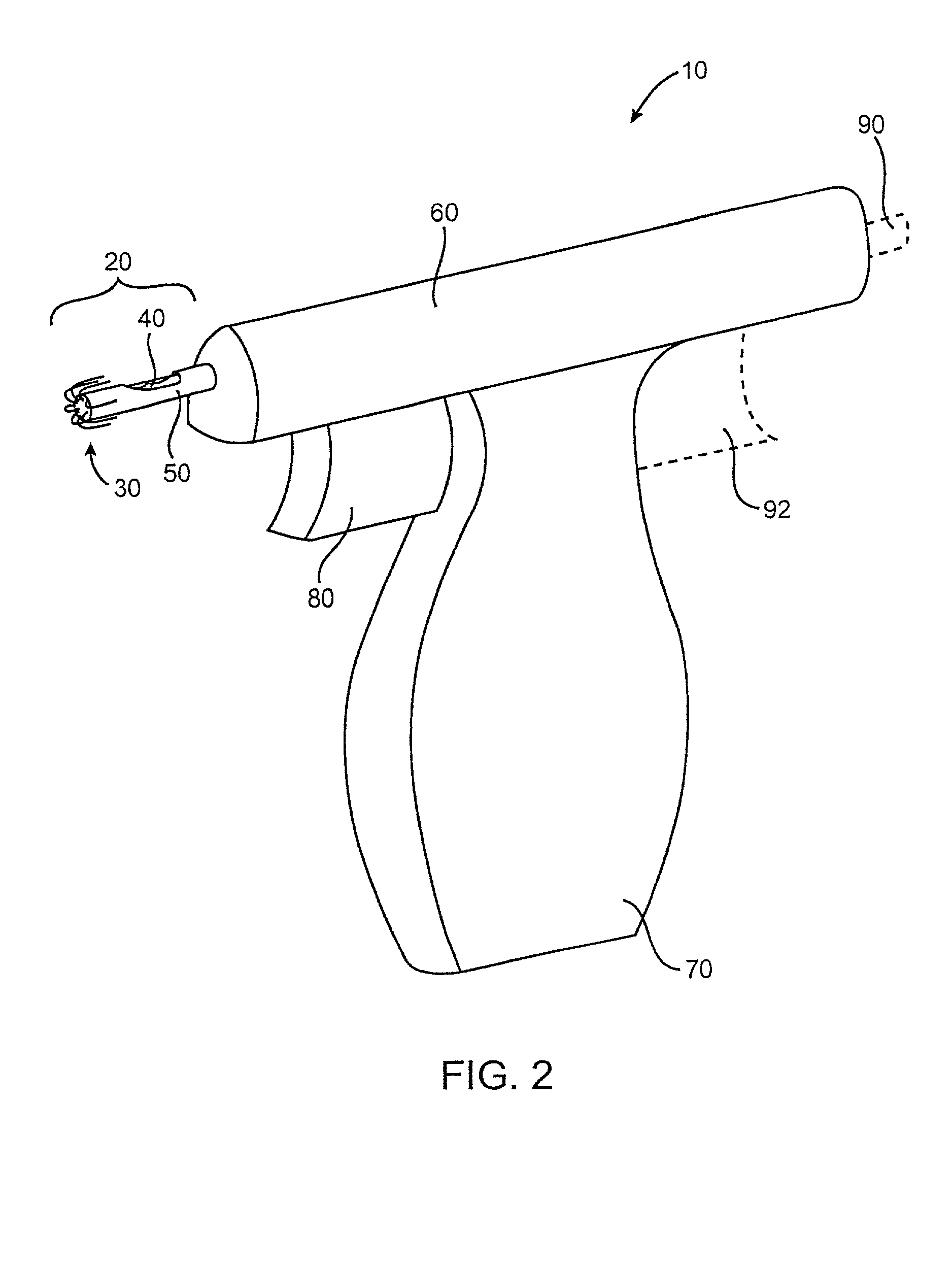Device and method for performing end-to-side anastomosis
- Summary
- Abstract
- Description
- Claims
- Application Information
AI Technical Summary
Benefits of technology
Problems solved by technology
Method used
Image
Examples
Embodiment Construction
[0029]The present invention is directed towards devices and methods for facilitating the suturing of one body duct to another body duct. In particular, the present invention will facilitate the end-to-side or end-to-end anastomosis of a vascular graft such as a saphenous vein to a target artery such as the aorta or similar blood vessel. Usually, a vascular graft will have a width in the range from 2 mm to 8 mm, while the target will have a width from 2 mm to 5 mm. The aorta will have a width from 20 mm to 40 mm. As described below, devices of the present invention can preferably deploy a plurality of needles in an evenly spaced or otherwise predetermined configuration to perform the anastomosis. In exemplary embodiments, a device of the present invention can position the suture for performing the end-to-side anastomosis through one hand stroke or step by the user. Deployment of a plurality of needles in a predetermined pattern increases the likelihood that the anastomosis will have ...
PUM
 Login to View More
Login to View More Abstract
Description
Claims
Application Information
 Login to View More
Login to View More - R&D
- Intellectual Property
- Life Sciences
- Materials
- Tech Scout
- Unparalleled Data Quality
- Higher Quality Content
- 60% Fewer Hallucinations
Browse by: Latest US Patents, China's latest patents, Technical Efficacy Thesaurus, Application Domain, Technology Topic, Popular Technical Reports.
© 2025 PatSnap. All rights reserved.Legal|Privacy policy|Modern Slavery Act Transparency Statement|Sitemap|About US| Contact US: help@patsnap.com



